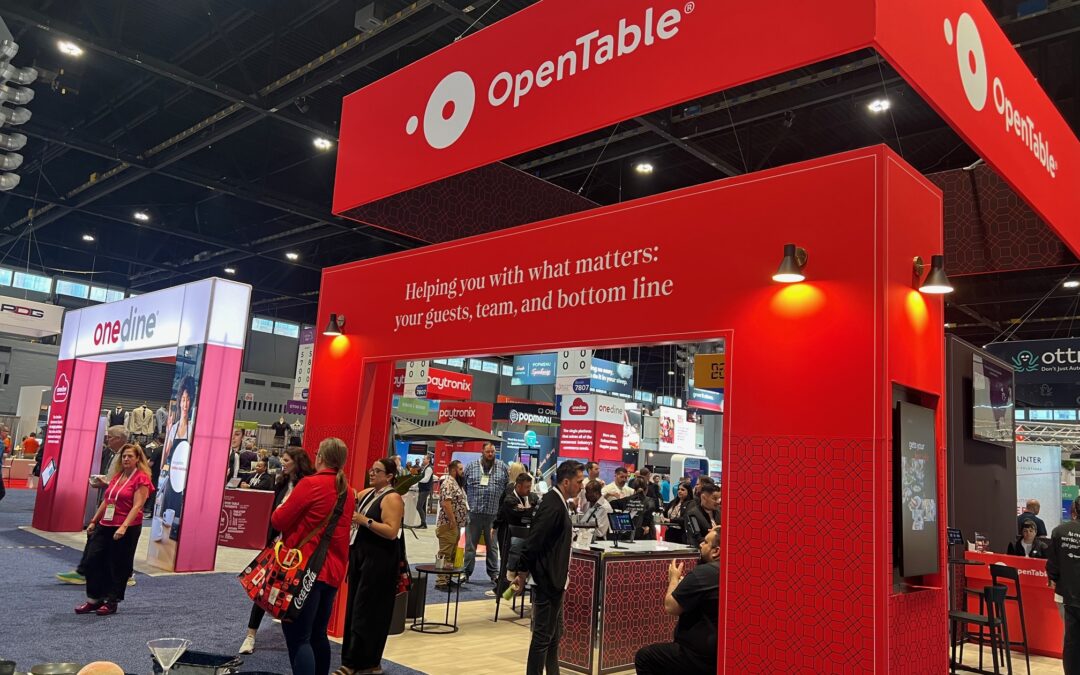As I wandered through the technology-packed aisles of the National Restaurant Association food show last weekend, one standout star stole the spotlight among hundreds of vendors: sleek display screens sporting AI-powered voice ordering.
Amid rising labor costs and high inflation, there is a clear and increasing demand for technologies that both replace and augment labor while offering seamless convenience for today’s digitally savvy consumer.
According to the restaurant association, labor is still a big pain point for restaurant owners. Hudson Riehle, the NRA’s senior vice president of research and knowledge, said that one out of three operators report recruitment and retention as one of their top challenges.
As such, more restaurants are turning to AI and robotics to streamline back-of-house operations, as well as reduce labor costs.
Joe Reinstein, executive director of the Digital Restaurant Association, noted that while it’s still “early days” for AI-powered restaurant tech, he acknowledged that such advanced technologies can solve real problems for restaurants.
“The possibilities [for AI] are limitless,” David Henkes, senior principal at market research firm Technomic, said during a show panel titled “What’s Shaping the Future of Foodservice.”
Henkes said slowing and declining traffic is making it harder than ever for restaurants to earn a profit. But AI can change that by enhancing a restaurant’s effectiveness and efficiency. “We are at the forefront of that in the industry.”
Other innovations spotted at the food show featured a semi-autonomous burger grill, a self-driving food delivery robot that can navigate elevators, a “voice-to-voice AI” receptionist, exterior smart food lockers, and two remote cashier solutions for drive-thru restaurants. Here’s a closer look.
Givex AI
Givex AI, a Toronto, Ontario-based company best known as a gift card provider for retailers and restaurants, debuted the company’s first iteration of a voice assistant at the restaurant show. Unlike other voice-AI powered products, Givex’s voice AI comes in the form of an animated character called “Parker.” The character takes orders, upsells, and walks the customer through the ordering process. It’s available for taking orders from a kiosk or a drive thru lane. Daniel Hawes, vice president of product design, said Parker will respond to any type of question. For example, in a demo, he told Parker that he was with a friend who had a hangover. “What do you recommend?”
The kindly bot responded with empathy. “I’m so sorry to hear about your friend,” the bot said. “For a hangover, staying hydrated is the key. I recommend fresh juice, like orange juice.”
Hawes said the voice AI product is currently being used by a quick service chain with 300 drive thru locations in the US and Canada. He didn’t disclose the partner due to confidentiality agreements. Later this year, GiveX expects to launch its voice AI tech with more brands. At that time, the bot will be able to take orders in multiple languages.
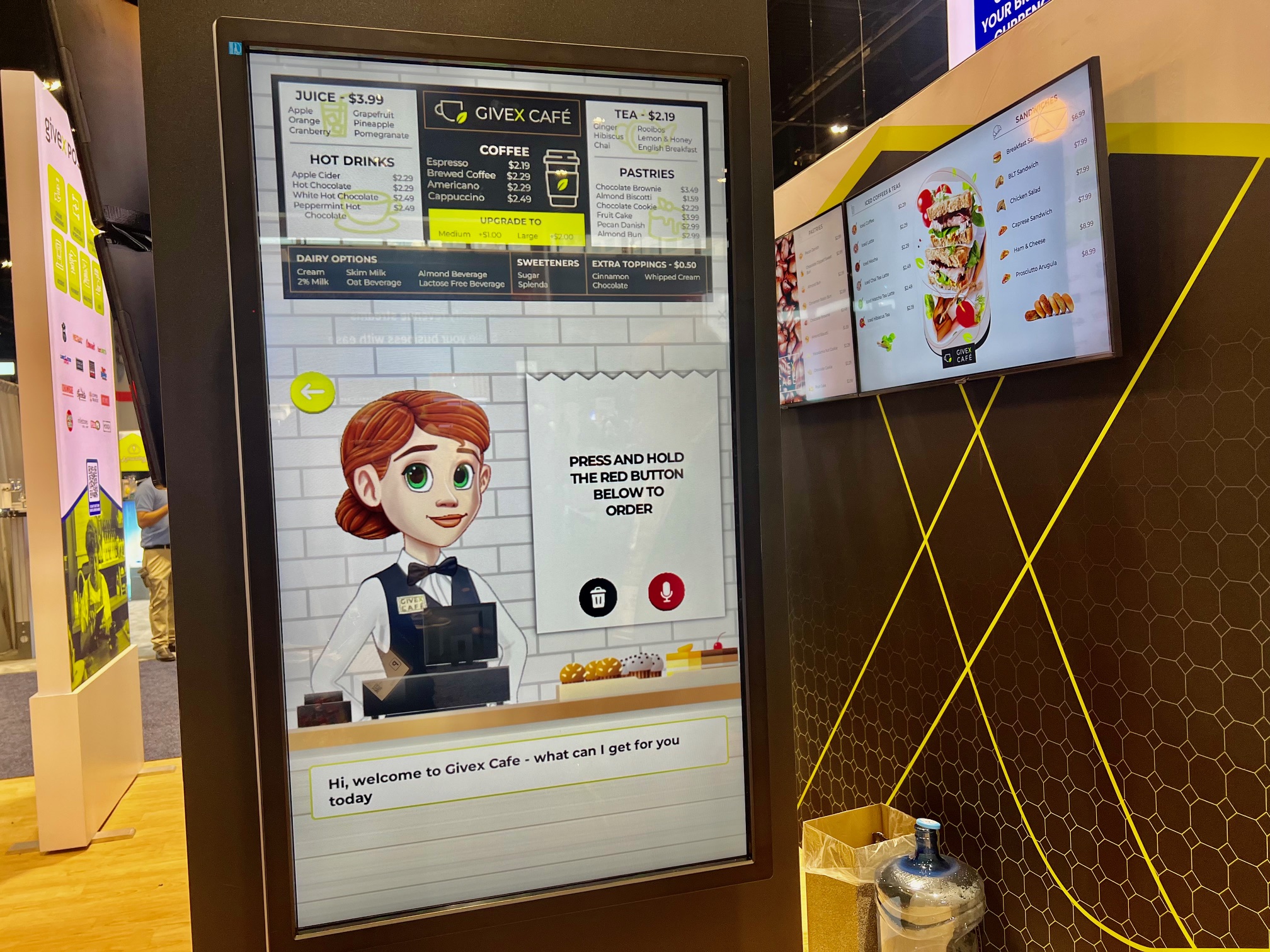
Givex’s voice AI comes in the form of an animated character called “Parker.
Aniai
Aniai’s Alpha Grill was a recipient of the show’s famed Kitchen Innovations award last year. The semi-autonomous burger grill simultaneously cooks both sides of a hamburger patty. The South Korean company Aniai returned to the show this year and nabbed another kitchen innovation award for its use of advanced AI and robotics. The Alpha Grill can crank out about 200 burgers an hour. Five-ounce patties are cooked in 55 seconds. The company believes it can solve throughput and labor shortages for quick-service burger joints, especially chains with large digital and drive-thru businesses. The company recently opened its first North American showroom in Midtown Manhattan. Aniai said they are working with “several notable” North American fast-food brands. In South Korea, one of the company’s largest customers is burger franchise Lotteria, which has 1,300 locations. Lotteria was at the show using the Alpha Grill to make its signature bulgogi burgers. A rep for the burger chain told Food on Demand that it plans to enter the US next year.
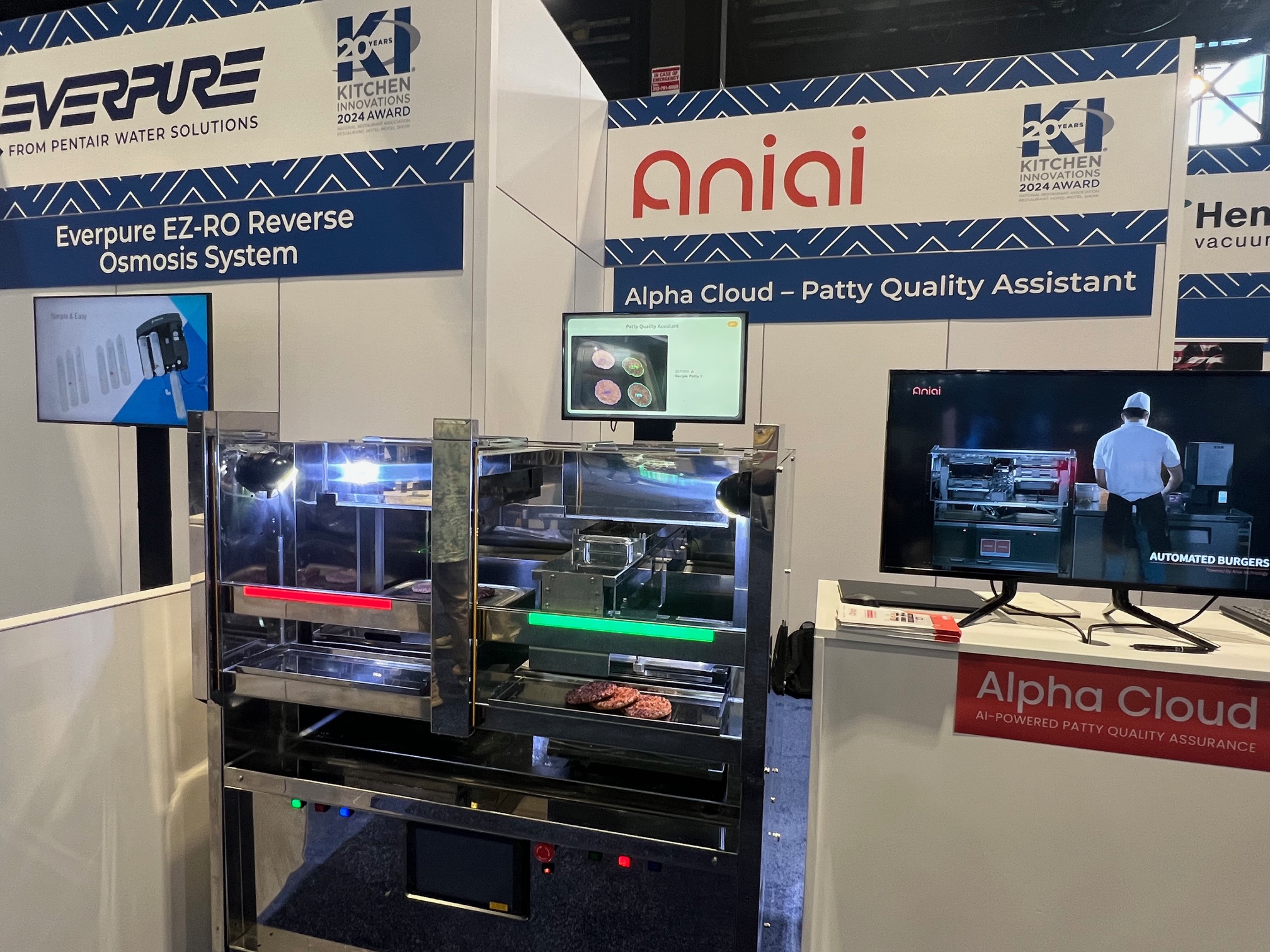
Aniai’s Alpha Grill simultaneously cooks both sides of a hamburger patty.
Bear Robotics
Six years ago, Bear Robotics introduced its robot food runner, “Penny,” at the NRA show with a small kiosk stand. Today, the California-based startup has grown significantly in the automation space, showcasing four foodservice robots at a massive booth. The rebranded “Servi” robots skillfully navigated crowds and ramps, but the standout was their newest model: Servi Lift. This self-driving robot is designed specifically for food delivery. Delivery drivers place food in Servi’s compartment by entering a code. Servi then transports the food up an elevator and to the front of an apartment. Juan Higueros, chief operating officer, said customers receive a text when their food is ready and retrieve it by entering a code on the touch screen display. Servi Lift is intended for use in residential and office buildings, as well as senior living facilities, where delivery food is often left in the lobby. Currently, the robot is deployed at 70 locations, serving as food runners at select ghost kitchens in the US, though Higueros did not disclose the provider.
However, a representative at the Otter booth, a POS and order processing platform for Travis Kalanick’s CloudKitchens, later mentioned to me that their ghost kitchens are equipped with robot food runners. The robots transport food from the kitchen to delivery providers.
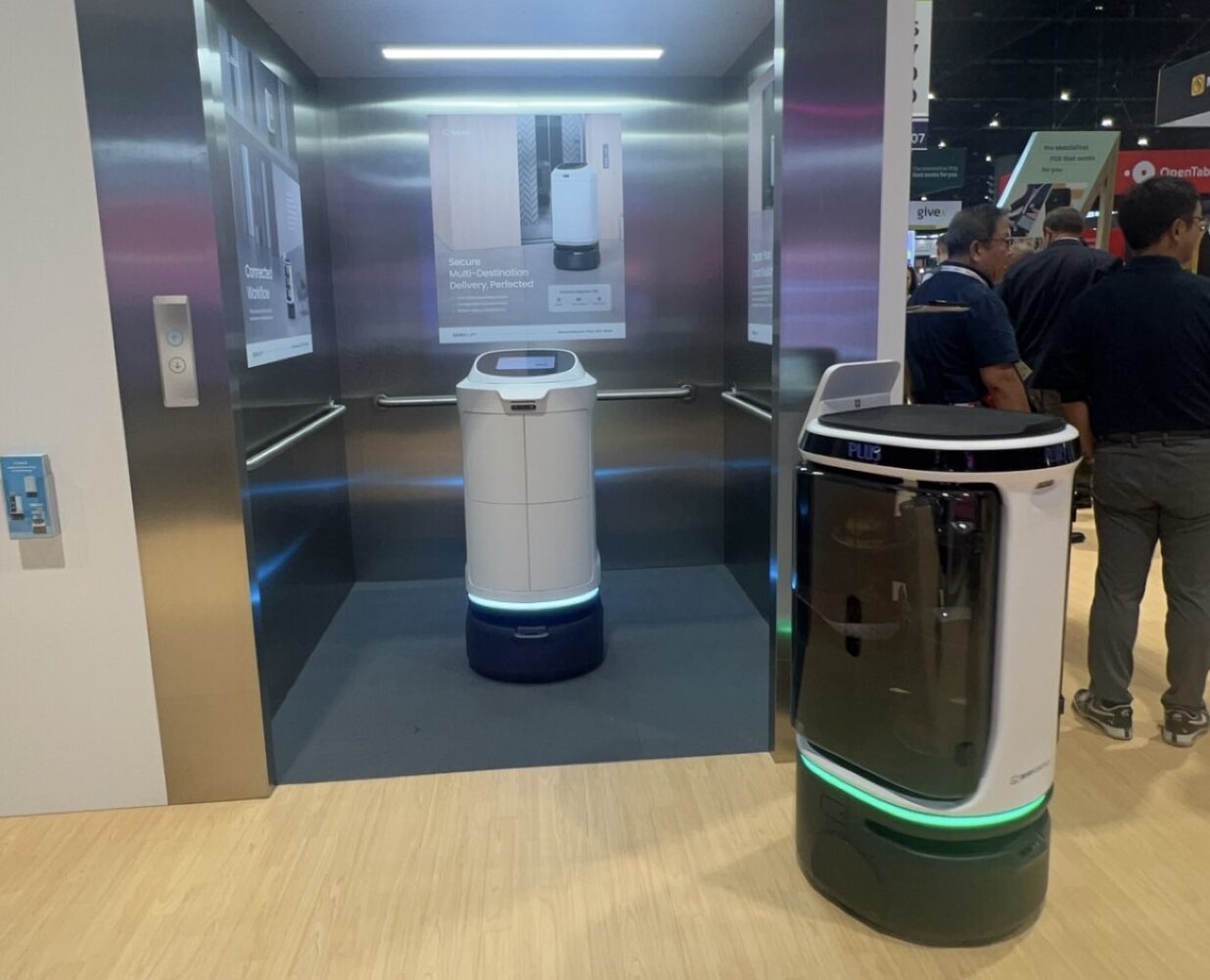
Bear Robotics “Servi” robots are designed specifically for food delivery.
SoundHound AI
SoundHound’s voice AI systems were on full display at the show. The company refers to its drive-thru bot system as dynamic interaction. Its drive-thru voice assistants can be found taking orders at White Castle and Panda Express. More announcements are coming soon, company spokesperson told Food on Demand. The company’s voice AI for phone orders is currently its most prolific offering, she said. More than 20 large scale brands covering thousands of locations use this technology, including Jersey Mike’s, Papa Johns, Casey’s, and Chipotle. In December, SoundHound AI merged with SYNQ3 Restaurant Solutions, a leading provider of voice AI. The deal made SoundHound AI one of the country’s leading providers of voice AI for restaurants.
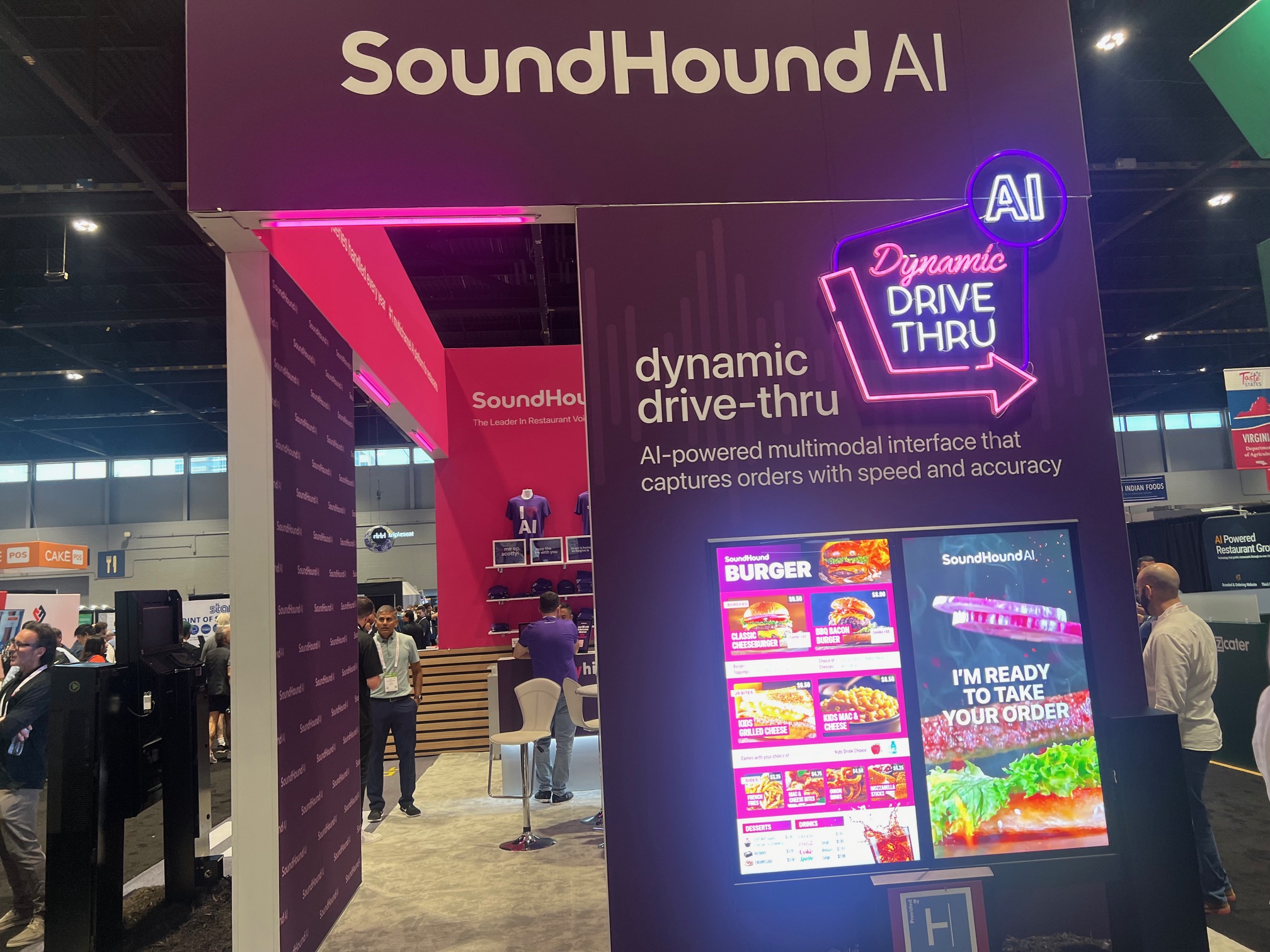
SoundHound Voice AI refers to its drive-thru bot system as “dynamic interaction.”
ReachifyAI
ReachifyAI is a phone automation solution tailored for the restaurant industry. While other voice AI companies are deploying voice assistants in drive-thru lanes, ReachifyAI is targeting phone orders. Their bot concierge service offers AI-powered voice ordering by phone or text-to-order services. Chief Marketing Officer Mike Mayo said restaurants are losing money on phone orders because they are understaffed and can’t take calls during peak hours. The company’s text-to-order solution can increase revenue by 37% because the bots are taking every call. “You’re capturing lost revenue,” he said.
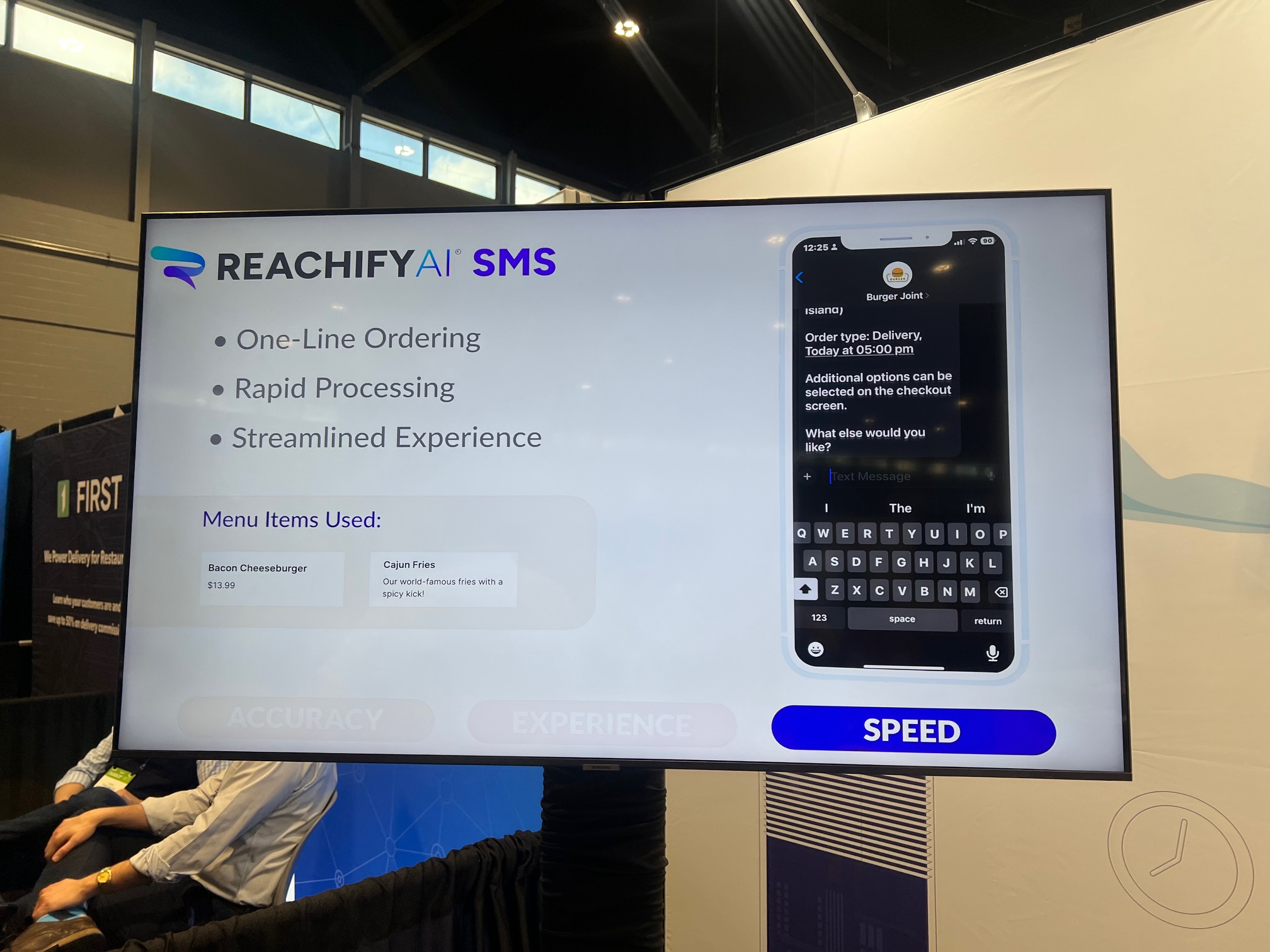
The ReachifyAI bot concierge services offers AI-powered voice ordering by phone or text-to-order.
Xina
Miami-based Xina is a startup offering a voice ordering chatbot tailored for restaurants and hotels. At the show, the company demonstrated its voice bot for both kiosk and phone ordering. For kiosk interactions, a consumer taps a button on the screen to engage the chatbot and then converses with it. The bot upsells and reviews the order to ensure accuracy. The voice bot functions similarly for phone orders. Izabela Nad, director of operations, said operators are primarily interested in the phone order bot system, as it relieves staff from this task. She added that the software is compatible with restaurant drive-thru systems. The company is seeing demand in California, where the minimum wage for fast food workers recently jumped 25 percent to $20 an hour.
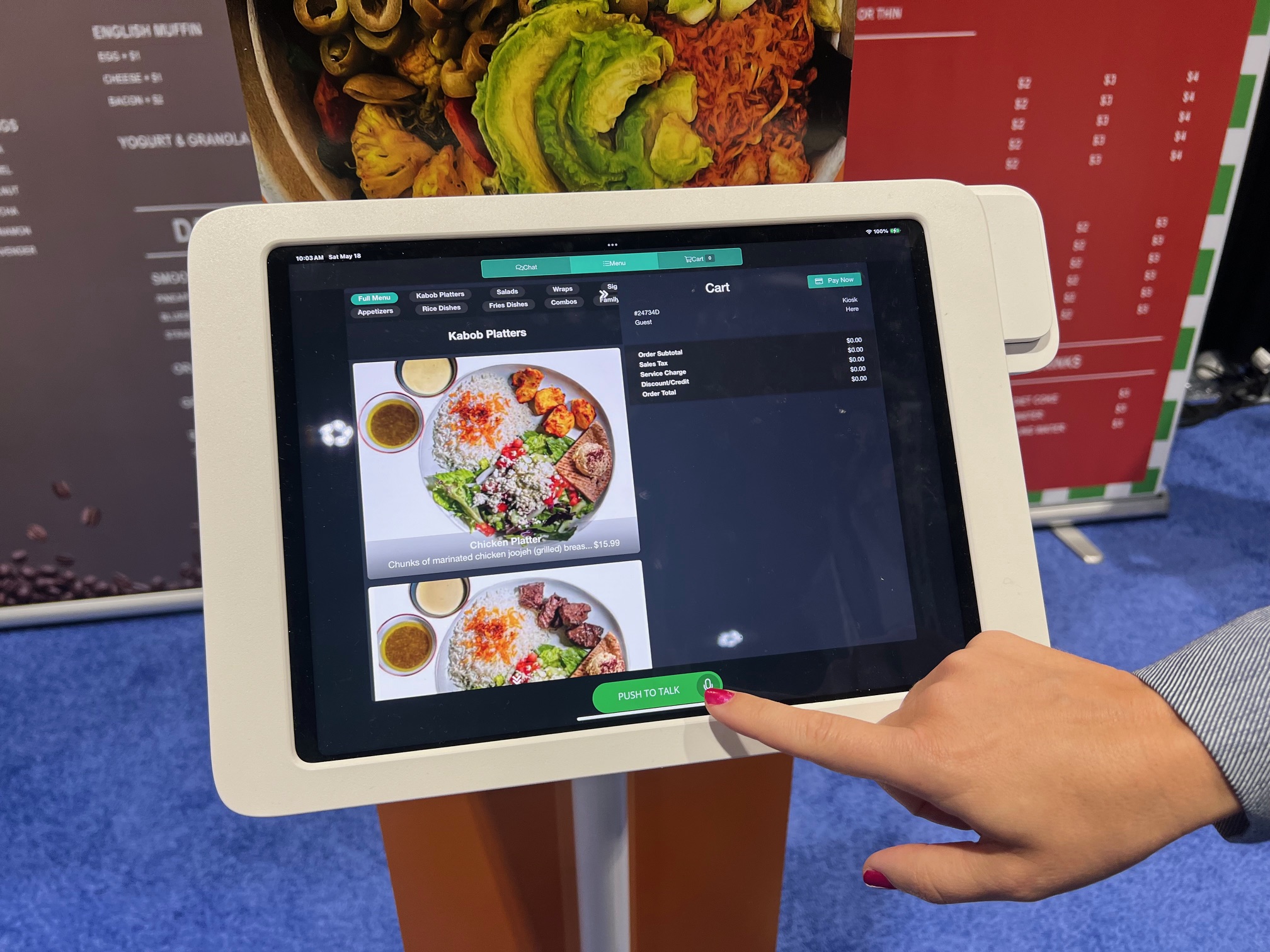
Xina offers a voice-ordering chatbot for kiosks and phone ordering, tailored for restaurants and hotels.
Argo Labs
Argo Labs is a New York-based startup that has developed what it calls a “voice-to-voice AI” software tailored for the restaurant industry. “Our AI receptionist is designed to intelligently handle customer interactions over the phone, providing a seamless and personalized experience that enhances customer satisfaction and streamlines restaurant operations,” the company said. The tech solution can take orders, make reservations, and answer customer questions like a concierge. The company described its “human-like voice agent” as friendly, fast, and available 24 hours a day. I tested the bot, and it truly felt like I was conversing with a real human. She was very conversational, using phrases like “take your time” and “absolutely” while processing my order.
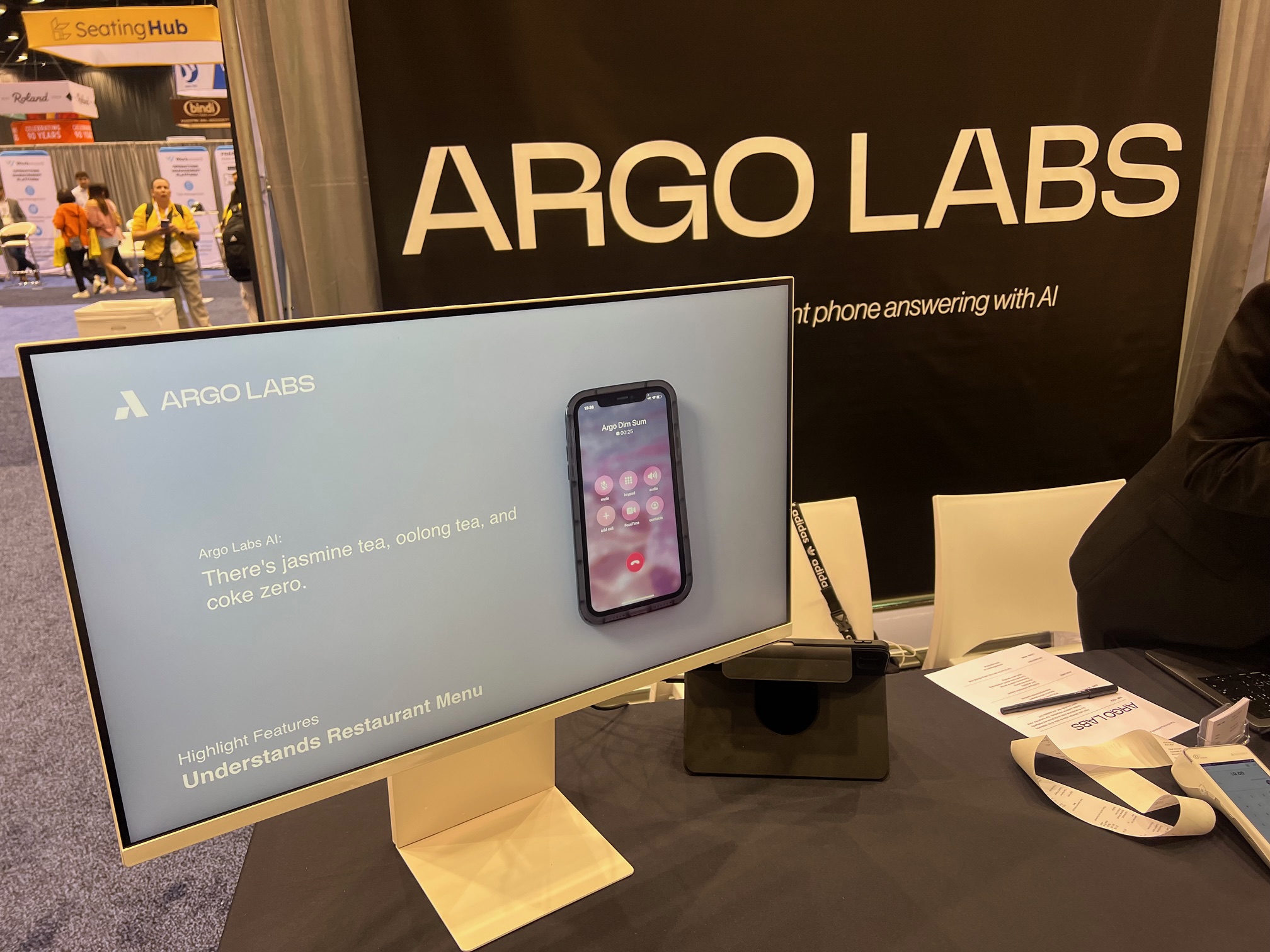
Argo Labs takes orders, makes reservations and answers customer questions like a concierge.
Apex Order Pickup Solutions
Apex has been providing food lockers to the industry for years. This year, the company nabbed a 2024 Kitchen Innovations award for its new OrderHQ Exterior Smart Food Locker Solution. The lockers are designed for exterior use, moving the pickup of takeout and delivery orders outside the restaurant. Ashley McNamara, vice president of global marketing, said the weather-proofed exterior lockers maintain the same temperature as the restaurant, which ensures meals are fresh when picked up by drivers or customers. McNamara said the lockers can be retrofitted into an existing restaurant, but are mainly geared for the growing number of digital stores popping up all over the US. “All you have to do is cut a hole in the wall,” she said.
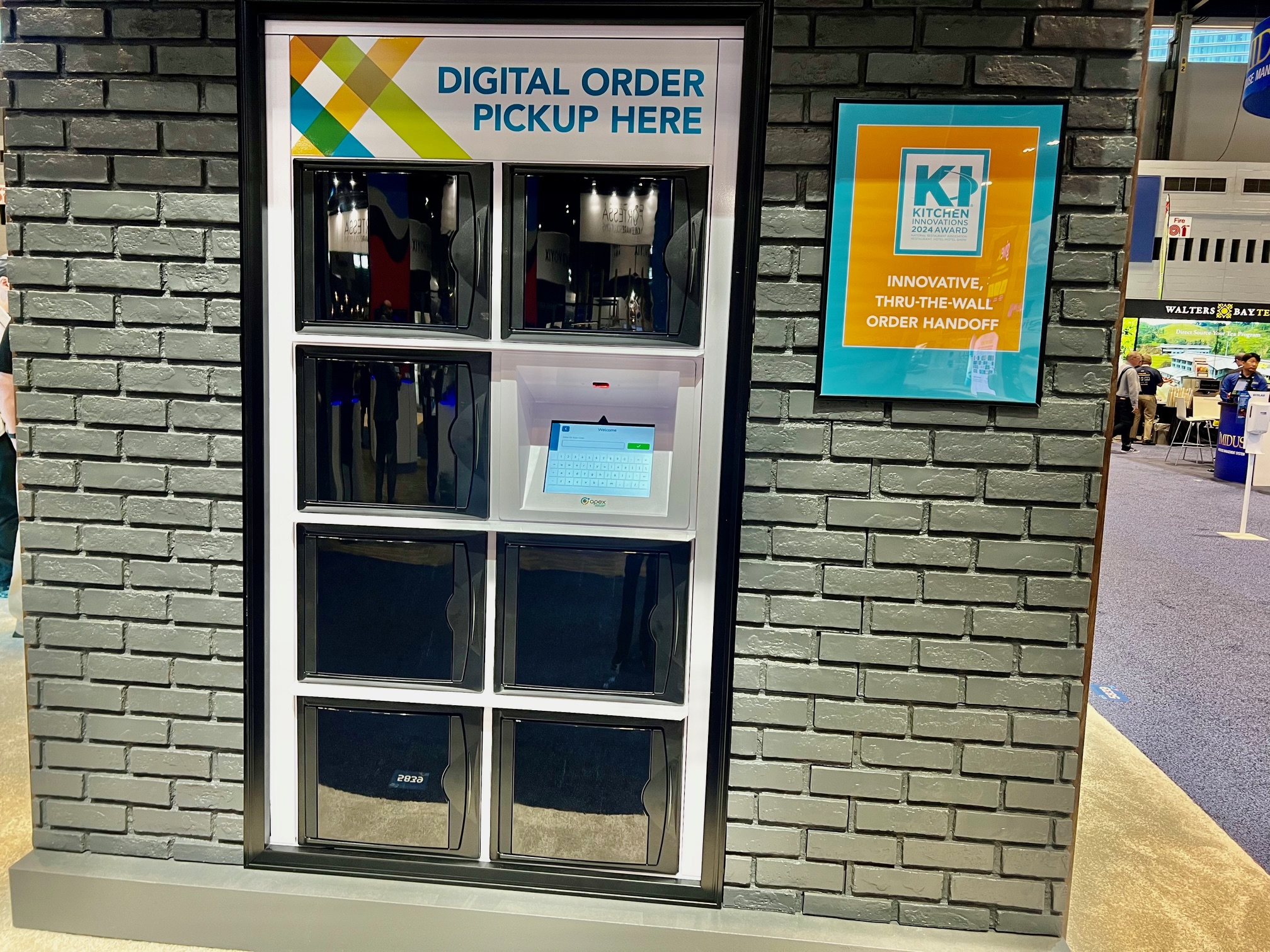
Apex’s lockers are designed for exterior use, moving the pickup of takeout and delivery orders outside the restaurant.
Bite Ninja
Bite Ninja, backed by Y Combinator, launched its virtual drive-thru cashiers in 2021. These cashiers are remote workers who take orders in a Zoom-like conference call setting. CEO Will Clem said the company paused for over a year to upgrade the software. Previously, a single remote cashier could only take orders for one restaurant. The upgraded software, which debuted at the show’s “Startup Alley” section, allows one remote cashier to take orders for multiple restaurants.
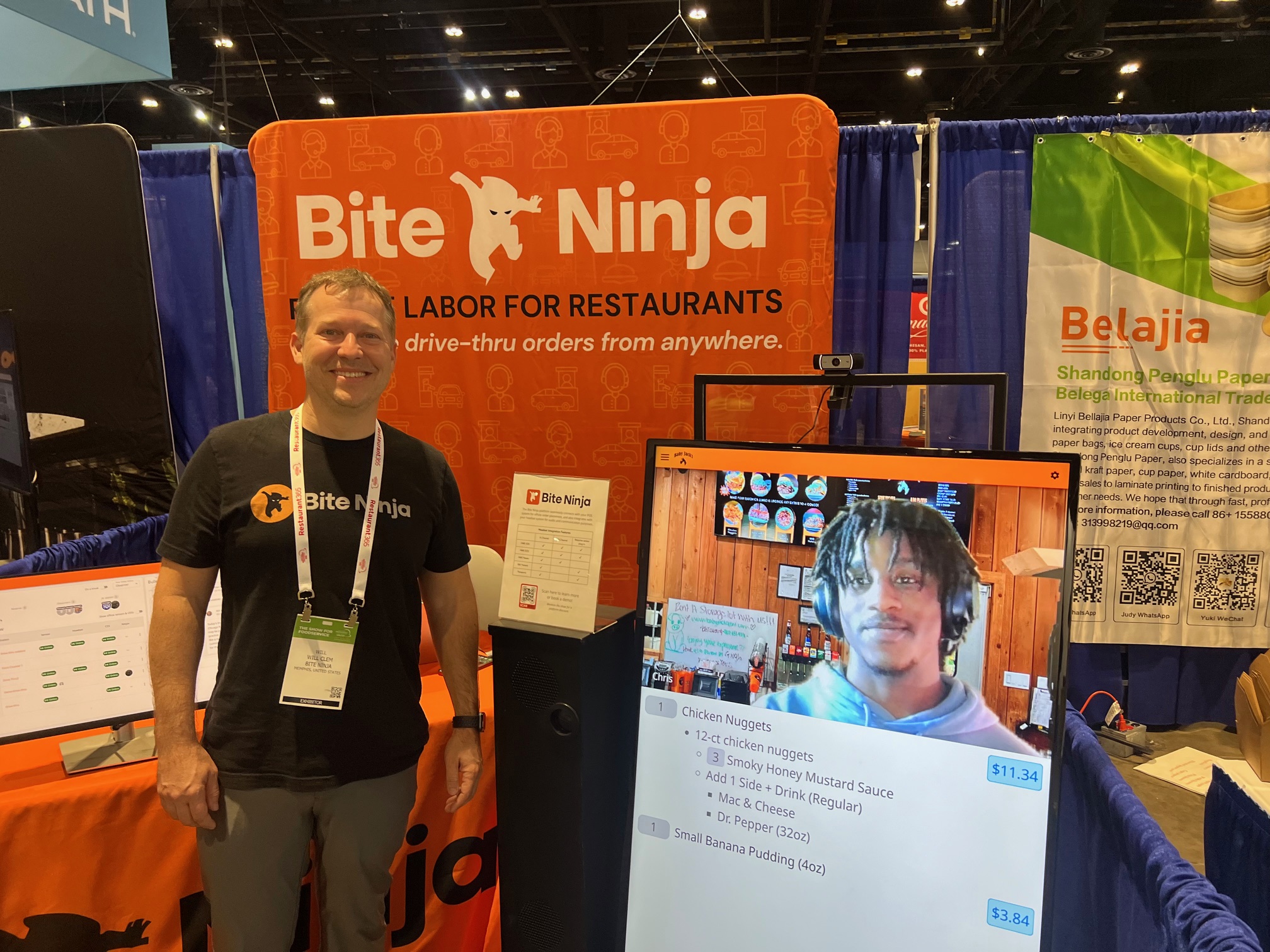
Bite Ninja’s virtual drive-thru cashiers are remote workers who take orders in a Zoom-like conference call setting.
Happy Cashier
This New York City-based startup is using remote cashiers to take orders from kiosks or digital screens set up in drive-thru lanes. But unlike Bite Ninja, these smiling cashiers are not based in the US. They’re taking orders from the Philippines, Malaysia, and Kenya. The startup also acts as a concierge service for a restaurant. The remote cashiers will answer phones and respond to social media reviews. CEO Chi Tsang said remote cashiers work at one location at a time and provide a friendly face for a customer, which he believes is a better solution than voice bots.

Happy Cashier uses remote workers to take orders from the Philippines, Malaysia, and Kenya.
Nancy Luna is a contributing writer for Food on Demand. She can be reached at [email protected]

